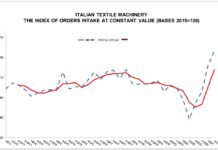The development of smart fibres advances as researchers from Imperial College London devise new promising technique.
The team, led by Dr Firat Güder from the Department of Bioengineering, have devised an innovative technique to print metals, such as gold, platinum and silver onto natural fabrics like cotton. The new approach would allow metal inks to cover entire fibres, instead of simply coating the surface of the fabric.

The technique involves covering the fabrics in microscopic particles of silicon, and then submerging the material into a solution containing metal ions. This preparatory process, known as SIAM (Sink-enabled autocatalytic metallization), allows metals to ‘grow’ throughout the material as the ions are deposited on the silicon particles.
The process allows textiles to maintain their absorbent properties and their flexibility alongside providing a large metallic surface. These properties are crucial to the functioning of many advanced technologies, in particular sensors and batteries, where ions in solution require interaction with electrons in metals.
The researchers employed the new approach in a variety of areas. These included the creation of a natural fibre-based sensor to detect the genetic indicators of Johne’s disease currently fatal to grass-eating animals and associated with Crohn’s disease in humans beings. The sensors embedded within fabrics could ultimately be used in clothing for advanced technological applications and, due to their proximity to the skin, smart fibres would allow great accuracy in monitoring vitals, with particular potential for the health and medical field.




